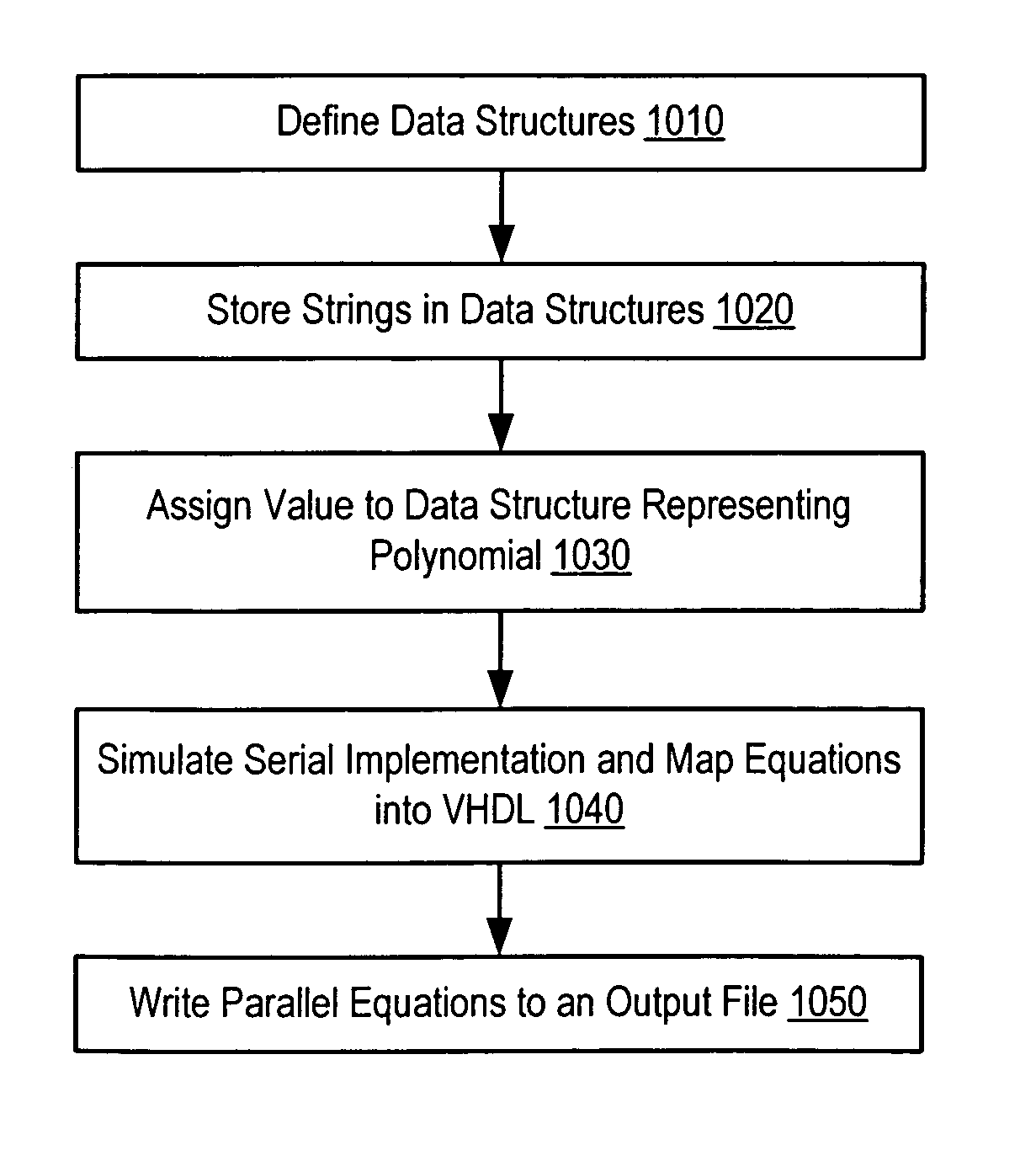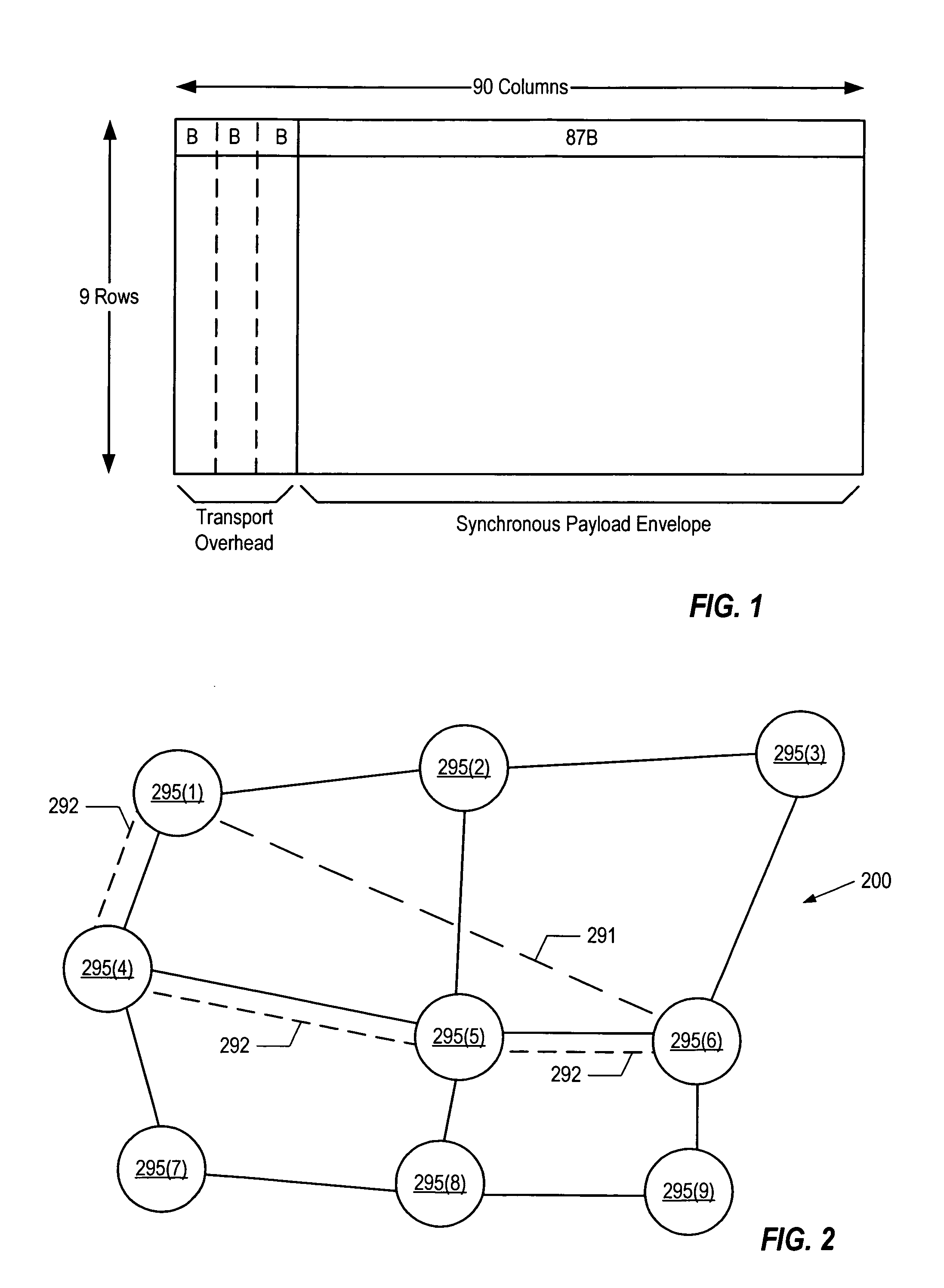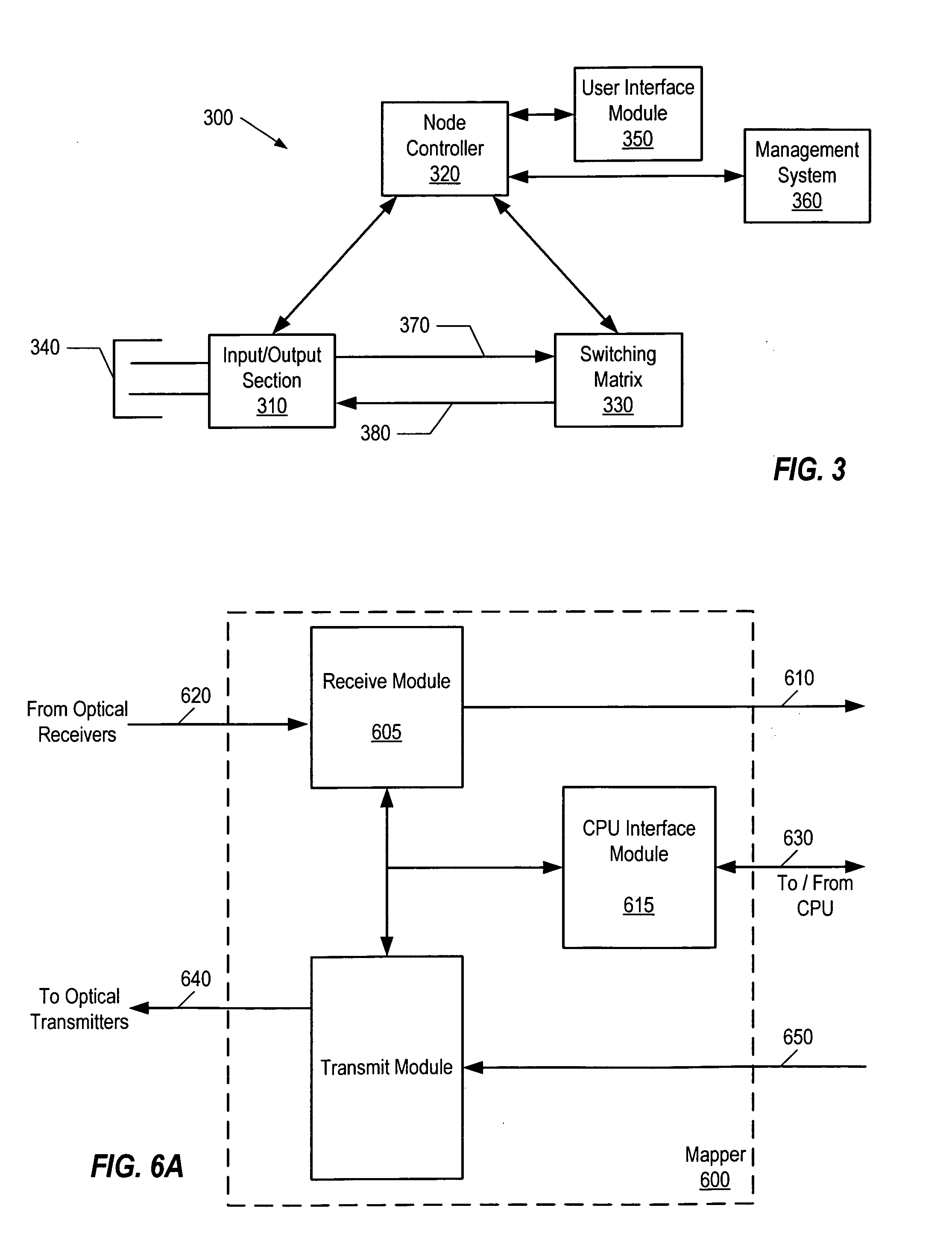Automatic generation of hardware description language code for complex polynomial functions
a technology of polynomial functions and hardware description, applied in the direction of cad circuit design, line-transmission details, instruments, etc., can solve the problems of many operations, multiple clock cycles for operations to complete, and serial techniques used to perform many galois field operations, including multiplication and division, may not meet system performance goals
- Summary
- Abstract
- Description
- Claims
- Application Information
AI Technical Summary
Problems solved by technology
Method used
Image
Examples
example networking
Environment
[0039]FIG. 2 illustrates a network environment in which embodiments of the present invention may be practiced. Network 200 includes a number of nodes, network nodes 295 (1)–(N). One or more of network nodes 295(1)–(N) can be a router such as router 300, described in FIG. 3, or any other type of telecommunication hub such as a repeater. Network 200 can support the automatic provisioning, testing, restoration, and termination of virtual paths (exemplified by a virtual path 291) over a physical path (exemplified by a physical path 292) from one of network nodes 295(1)–(N) to another of network nodes 295(1)–(N). Physical path 292 utilizes fiber-optic cables, for example, in order to offer high speed and a relatively large number of connections provided by an optical arrangement.
[0040]FIG. 3 illustrates a block diagram of an exemplary router 300. Router 300 is a high-capacity telecommunication network device based on optical technologies and components that provides routing, g...
PUM
 Login to View More
Login to View More Abstract
Description
Claims
Application Information
 Login to View More
Login to View More - R&D
- Intellectual Property
- Life Sciences
- Materials
- Tech Scout
- Unparalleled Data Quality
- Higher Quality Content
- 60% Fewer Hallucinations
Browse by: Latest US Patents, China's latest patents, Technical Efficacy Thesaurus, Application Domain, Technology Topic, Popular Technical Reports.
© 2025 PatSnap. All rights reserved.Legal|Privacy policy|Modern Slavery Act Transparency Statement|Sitemap|About US| Contact US: help@patsnap.com



